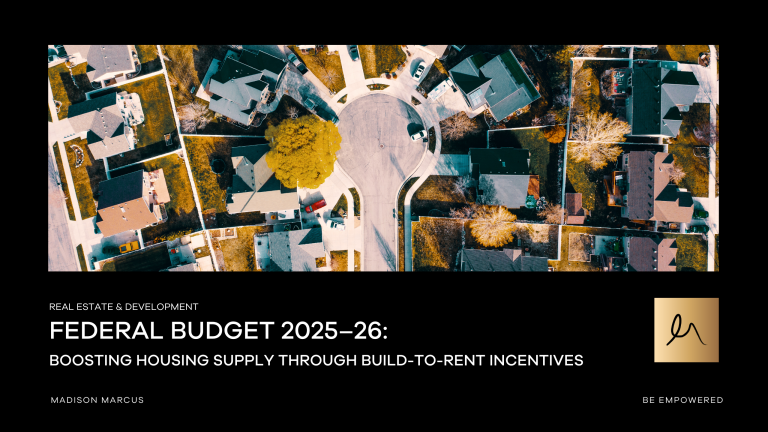If you are an indivudual or company involved in the business of redevelopment of land, having knowledge about planning and environment law is essential if you want to avoid delays and disputes as well as significant penalties, including fines and imprisonment. While both fields are complex, this article will provide a basic overview of these two laws, how it works in New South Wales and why hiring a lawyer in this field can save you time and money and avoid significant penalties.
Planning and Environmental Law Coverage
What is planning and environmental law in Austalia? In Australia, planning and environmental laws are State based. The Parliament in each State in Australia makes the rules that govern how land and natural resources can be used and developed in that State. In NSW the central piece of legislation that governs land use and the preservation of natural resources is the Environmental Planning and Assessment Act 1979. In that Act, the “environment” is defined broadly as “all aspects of the surroundings of humans, whether affecting any human as an individual or in his or her social groupings”. As you can see from this definition, Parliament has a very broad reach when it comes to regulating both the the human and natural environments.
Parliament has also made laws that licence pollution and make it a criminal offence to harm or pollute the natural environment. Penalties for anyone convicted of an offence can be significant and can include a custodial sentence. In NSW the central pieces of legislation governing harm to, and licencing and enforcement of, natural resources and pollution are the Biodiversity Conservation Act 2016 and Protection of the Environment Operations Act 1997.
Planning Vs Environmental Law
Planning and environmental laws are often regarded as a single branch of law. However they serve different purposes and required specialist knowledge of the law. In a nutshell, planning law refers to the legal framework that governs land use and development. Environmental law is concerned with the protection of the environment, including air quality, water resources and endangered species. Natural resource law is a subset of environmental law and is concerned with preserving natural resources such as native plants and animals, both terrestrial and aquatic.
For example, planning laws may dictate where new developments can be built including the the size shape and impacts of development. Environmental laws allow authorised pollution to occur through a licencing regime and place limits on the type and degree of pollution of the environment. Planning and environmental laws compliment each other and can help to ensure that the environmental impacts of new development are fully considered before development takes place and that development is permitted only where the impacts on the natural and built environment are considered acceptable.
Planning, Environment and Government Acts in New South Wales
Planning, environment and government acts can have a significant impact on a land owners your ability to develop land or carry out activities on the land. These laws are created to make sure that new development takes place in a way that does not negatively affect the built and natural environments, including threatened species, natural and built heritage and neighbourhood character.
Lets have a closer look at the most common planning, environment and natural resource laws that are in force in NSW.
1. Environmental Planning and Assessment Act
The EP&A Act is now more than 40 years old and has been amended and updated many times over that period. Some town planners say that the EP&A Act was ahead of its time when it first commenced and continues to be an example of modern land use control by legislation. The Act was created to promote the social and economic welfare of a community through a framework for the preparation of strategic land use plans and a process for environmental assessment at a project control level by balancing economic, environmental and social considerations in the decision making process. In 1998 the EP&A Act was amended to include a scheme for the private certification of building work, which now is a significant element of building regulation in NSW.
Protection of the Environment Operations Act 1997
The primary objective of the Protection of the Environment Operations Act 1997 is to protect, restore and enhance the quality of the environment in New South Wales, having regard to the need to maintain ecologically sustainable development. The concept of ecologically sustainable development involves four elements and program: the precautionary principle; intergenerational equity; conservation of biological diversity and ecological integrity and improved valuation, pricing and incentive mechanisms.
The POEO Act is concerned about protecting the environment. It achieves this objective firstly by establishing a regime for the preparation of environmental protection policies and the requirement to obtain an environmental protection licence for certain activities, known as “scheduled activities” that are known to pollute the natural environment. Secondly by giving the regulatory authority the power to issue environmental protection notices if the authority becomes aware of a pollution incident or an activity that is being carried out in an environmentally unsatisfactory manner. Thirdly, the POEO Act achieves its aims by creating environmental protection offences and giving the regulatory authority power to investigate and prosecute for alleged offences.
Biodiversity Conservation Act 2016
The Biodiversity Conservation Act 2016 is a relatively new legislation. Its primary purpose is to maintain a healthy, productive and resilient environment for the greatest well-being of the community, now and into the future, consistent with the principles of ecologically sustainable development. The BC Act also adopts to concept of ecologically sustainable development mentioned above. The BC Act is concerned with the protection of animals and plants, protection of areas of outstanding biodiversity value, the identification and protection of threatened species and threatened ecological communities and private land conservation agreements such as biodiversity stewardship agreements.
The BC Act also creates a cutting edge biodiversity offsets scheme that allows biodiversity credits to be traded and thereby enable credits to be acquired by developers or other persons who wish to undertake development that will affect biodiversity values on the land.
The following Federal legislation also affects the use and conservation of land in NSW:
2. National Environmental Protection Council Act
The National Environmental Protection Council Act 1994 aims to let Australian citizens enjoy the benefit of equivalent protection from air, water, soil and noise pollution. The council created specifically for this act can make decisions related to the assessment of site contamination, hazardous wastes, recycling and vehicle emissions.
3. Environmental Protection and Biodiversity Conservation Act
Commencing in 1999, the Environmental Protection and Biodiversity Conservation Act ensures the protection of threatened species or ecological communities at a National level. It is a federal law made to protect the environment and biodiversity by creating a framework for conservation. It gives the Federal Government the power to intervene in development projects that could potentially have a negative impact on historical areas, national parks and marine reserves.
According to the Australian Government’s Department of Agriculture, Water and the Environment, this act aims to protect the following:
- Commonwealth marine areas
- Listed threatened species and ecological communities
- Migratory species protected under international agreements
- National heritage places
- Nuclear actions (including uranium mines)
- The Great Barrier Reef Marine Park
- Wetlands of international importance (listed under the Ramsar Convention)
- World heritage properties
How Madison Marcus Can Help You
If you are looking for legal help to deal with a planning or environmental law dispute anywhere in NSW, Madison Marcus is here to help you. We are an award-winning law firm that can offer legal services related to planning, environment and government acts. We have highly experienced lawyers who can help you find solutions in your development project and assist you in minimising delay and maximising potential of your project. We are also capable of aiding you in residential applications across different industry sectors.
Having been recognised by Best Lawyers and Australasian Law Awards, you can be sure that you are in the hands of professionals. Our Planning Environment and Government team has expertise and knowledge across a broad range of planning, environment and government laws, and is experienced in dispute resolution, construction disputes and land acquisition.
For all enquiries or to book a free 15-minute consultation, contact us today.







